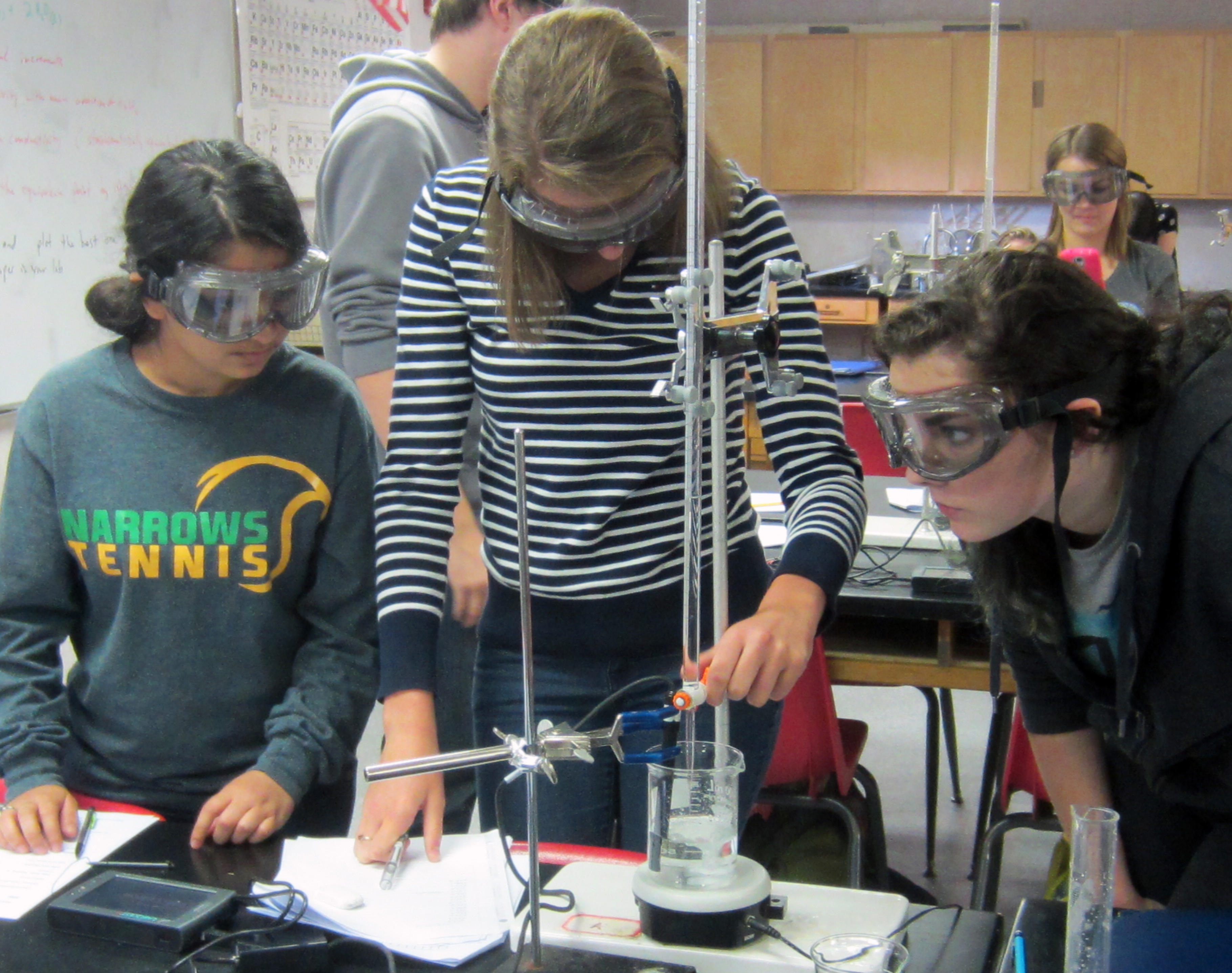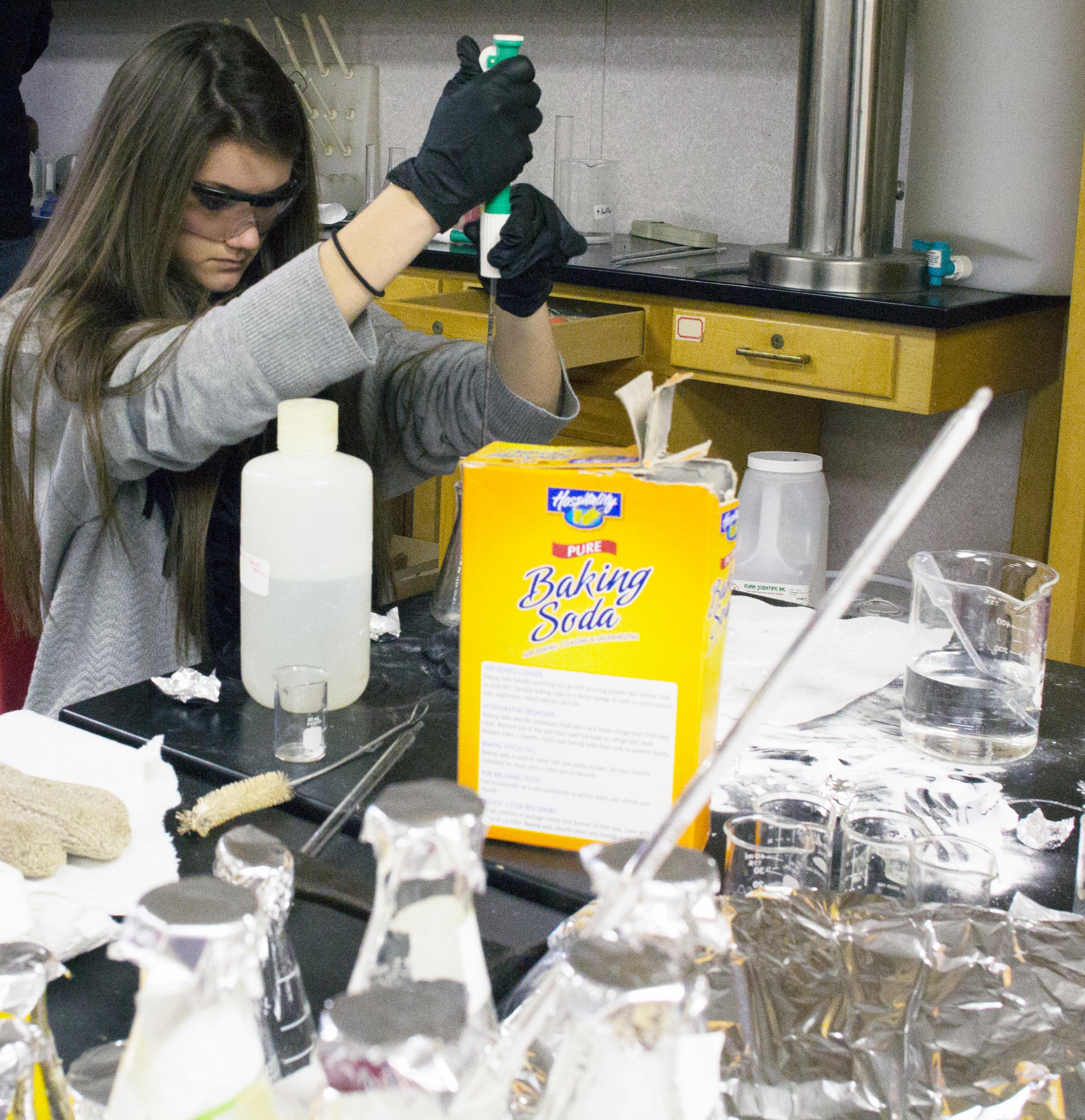Arrange a Class Visit
 Students in grades three, four, five, six, seven, eight, and ten are invited to the Governor's School each year to rotate through age-appropriate activities. The visiting students have fun investigating aspects of genetics and blood typing, enjoy applying math facts to concepts common in coding and game design, and excitedly conduct experiments in physics and chemistry.
Students in grades three, four, five, six, seven, eight, and ten are invited to the Governor's School each year to rotate through age-appropriate activities. The visiting students have fun investigating aspects of genetics and blood typing, enjoy applying math facts to concepts common in coding and game design, and excitedly conduct experiments in physics and chemistry.
We host afternoon visits between the hours of 11:30 and 2:30. We will work with the schedule of individual schools to arrange a time that best fits their needs in the afternoon. Typically, an afternoon visit will last 2 to 2.5 hours and students spend approximately 25 minutes completing each activity. The activities run smoothly with approximately 15-20 students each, so we are able to handle approximately 80 visiting students, divided into four groups, in one afternoon. We ask that students eat lunch prior to arrival. Bus parking is available.
If you are interested in arranging a visit, please contact Rebecca Phillips by email or phone. We look forward to hosting your students for a fun afternoon of math and science exploration. We hope to work with you to arrange a visit.
Example Activities
Example SWVGS Fifth Grade Activities for Visiting Students
Chemistry Activity
Visiting students will participate in an engaging hands-on discussion of a pressing environmental issue: the gulf oil spill. The activity will focus on ideas such as the properties of water and differences in hydrophobic and hydrophilic chemicals. Additional topics include potential clean up methodologies and the properties of absorbents and surfactants. Students will carry out their own small scale cleanup.
Computer Science Activity
Students will be playing video games on the computer while practicing arithmetic skills. The games are: Asteroids, Pac-Man, Missile Command, and Battle Tank. The arithmetic skills students will practice include addition, subtraction, multiplication, and division. Come expecting to have fun and see that there are many ways to have fun while learning. Students will be introduced to the games at the Governor's School and will then be able to access them via the internet for later practice.
Life Science Activity
In this activity, students will learn the science behind blood types and how we can use blood types to determine ancestral relationships. Students will use artificial blood from an imaginary population of islanders to determine if the residents are descendants of a "bird man" as their folklore states, or if their origins are less fantastic. This activity involves learning about proteins, antibodies, the methodology of blood typing and comparing blood type frequencies in order to make rational judgments about ancestral relationships.
Mathematics Activity
We will explore probability games. Students will actively participate in learning the basic concepts of probability using manipulatives. We will calculate the expected payouts of games of chance ranging from simple coin toss and die rolling games up to number selection like the lottery. Students will experience first-hand the unbalanced nature of probability games like the lottery.
Physics Activity
You might not think about it, but physics surrounds you all day long. In fact, physics determines the way light is reflected. Light will reflect in very specific ways depending on how it hits a surface, and in this activity we will be endeavoring to understand this process. Teams will be created to compete with each other to see who can align a series of mirrors to reflect a beam of light at a specific target. Each team will be given time to decide how they want to set their mirrors in an attempt to hit their target. After arranging their mirrors and exiting the target area, a referee will turn on a light and allow team members to see where their light beam went.
Example SWVGS Sixth or Seventh Grade Activities for Visiting Students
 Chemistry Activity
Chemistry Activity
Visiting students will participate in fascinating experiments about polymers (plastics). Students will make a cross-linked polymer out of commonly available materials. They will then make their own polymer creation, which they can take home, using an unusual and fun polymer material. Emphasis will be on understanding the interesting properties of polymers.
Computer Science Activity
Students will be playing video games on the computer while practicing arithmetic skills specifically related to fractions. The games are: Action Fraction, Fraction Tetris, and Fraction Wall. The students can practice skills with the four basic operations of addition, subtraction, multiplication, and division of fractions. This is a good way for the students to strengthen their fraction skills and have fun at the same time. Students will be introduced to the games at the Governor's School and will then be able to access them via the internet for later practice.
Life Science Activity
Students will collect and analyze data to determine which potential living kidney donor could safely donate a kidney to a patient with kidney failure. After a brief introduction to urinalysis, blood typing, and HLA testing, students will perform simulated clinical tests to determine the health of the potential donors as well as the tissue compatibility of the patient and potential donors. Students will then decide which donor is most appropriate for the patient.
Mathematics Activity
Students will explore some common arithmetic tricks, number tricks, divisibility rules and card tricks and learn a bit about the mathematics behind them.
Physics Activity
Students will work in small groups to build small catapults from various provided parts. Each part will have both pros and cons which the students will have to weigh to determine how to create a catapult which works effectively. After a timed construction period, students will launch soft projectiles. Launches will be measured for distance and accuracy. In this activity students will face the difficulties associated with engineering and will learn to think critically to solve this engineering challenge. Results will be tabulated and the group who has the highest accuracy and longest distance will be deemed the champion!
Example SWVGS Seventh or Eighth Grade Activities for Visiting Students
Chemistry Activity
Visiting students will participate in an engaging hands-on discussion of interest to all areas of chemistry: chemical kinetics. Color changing reactions are exciting to see and perform. Students will modulate parameters to try to control a sensational color changing chemical reaction. Emphasis will be on applying the scientific method and deduction skills with respect to chemical reactions.
Computer Science Activity
This activity will be based around a program called Tables Graphs and Ramps. It is a computer simulation of rolling a ball down a set of 5 incline planes. Students will look at an example set of graphs that represent the position, velocity, and acceleration of the ball when it had rolled along the ramps, than adjust the initial position and velocity, and the positioning of the ramps to match the graphs. Students will have fun learning some basic physics of motion while working with the computer simulation.
Life Science Activity
After a brief introduction to the physiological differences in Type I and Type 2 Diabetes, students will analyze simulated blood samples collected during a glucose tolerance test. Students will test the samples for glucose and for insulin to determine whether a patient has Type 1 or Type 2 diabetes. The activity will give students a chance to understand the molecular basis for techniques used to diagnose diabetes.
Mathematics Activity
Students will explore the mathematics involved in game theory. Game theory focuses on mathematically showing the strategies to produce a winning outcome to any game. There are complex systems like economics or military situations that can be applied as games, but there is also the fun side of looking at any game analytically to find the means to win. Students will take an active role in playing the Nim game and discovering the strategy that can lead them to the winning outcome. Students will also be exposed to how mathematical methods can be used to support the strategy. This game shows that numbers have a fun side.
Physics/Astronomy Activity
When you open your eyes they are bombarded by light reflected from everything around you. This light is actually filled with a lot of information. As we begin to understand light, we find that it is not made up of a single color, but a full spectrum of colors, especially the white light that we look at every day. Students will first use diffraction gratings to look at common gases such as neon and helium. They will act as scientists and understand how astronomers are able to identify gases found around the universe. Using a diffraction grating, light bulb, and meter sticks, students will work in small groups to calculate the wavelength of different colors of light. With careful measurements and these simple tools the students will be able to identify the differences in wavelengths on the scale of around 40nm (0.000000040 m)!
This site provides information using PDF, visit this link to download the Adobe Acrobat Reader DC software.
